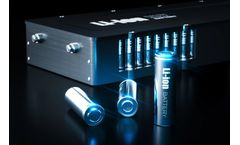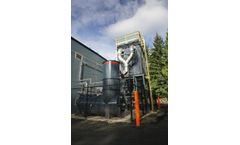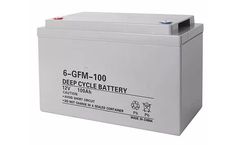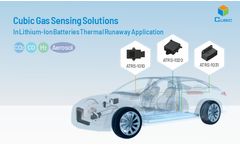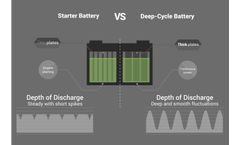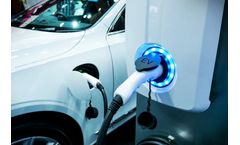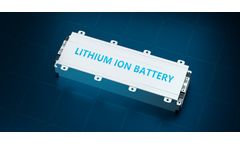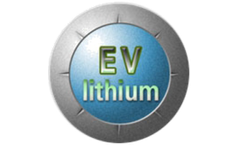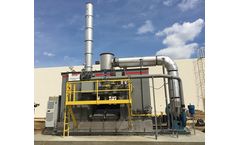Lithium Ion Li Ion Battery Articles & Analysis: Older
77 articles found
The most important components in a secondary battery are electrode materials, separators, and electrolytes. The main function of the electrolyte is to conduct ions to ensure that the ions move between the anode and cathode at a certain rate during the charging and discharging process of the battery to form the entire electrical circuit to generate current. As an important medium for ion ...
Lithium-ion batteries are currently widely used in the field of energy storage. The high risk of fires and explosions of lithium-ion batteries at energy storage stations has raised significant concerns about the safety of electrochemical energy storage facilities. Lithium-ion batteries serve as the energy carriers for the energy storage stations, with their electrode system components possessing ...
Thermal runaway is a violent chain reaction of exothermic chemical reactions resulting in an uncontrollable increase in system temperature. Now, where does this reaction might unfold? Batteries and energy storage systems, which are integral parts of tech around us, are the main stage for this drama. They sometimes fall victim to thermal runaway, turning a peaceful power source into a potential ...
The world of battery development is being transformed by the intricate chemistry of electrodes. They play a key role in enhancing energy densities and overall battery performance. This can be seen in lithium-ion batteries and their application in electric vehicles. Recent advancements in electrode material science, spanning from the implementation of graphite anodes to the exploration of solid ...
The Climate Institute seeks partnerships with startup initiatives and emerging technology development efforts that transform renewable energy systems. We welcome initiatives and demonstration projects to help advance meaningful climate solutions. The Climate Institute supports our colleagues and partners working on emerging technologies by providing research assistance, intern support, ...
This property provides a platform for the reversible storage and release of various substances, such as lithium ions. One of the key advantages of expandable graphite is its high thermal conductivity. ...
The Challenge In the ever-evolving landscape of energy storage technology, the demand for efficient and sustainable solutions has intensified, prompting a significant shift in the materials utilized for lithium-ion batteries. Anode active materials (AAM) are generally made from carbon-based materials like graphite, silicon, or a combination of the two, with graphite having been the most used ...
Introduction In today’s modern world, batteries play a pivotal role in powering an array of devices and systems, from our cars to emergency backup systems and even renewable energy storage. Among the various types of batteries available, the lead-acid battery is one of the oldest and most widely used technologies. This article will delve into the fascinating world of lead-acid batteries, ...
Lithium-Ion Batteries Explained Li-ion batteries have changed the way people store energy. ...
Recent years, lithium-ion batteries thermal runaway events have attracted widespread attention. To further reduce the loss of life and property caused by lithium-ion batteries thermal runaway, some important regulations have been promulgated. UN GTR 20: “The vehicle shall provide an advance warning indication to allow egress or 5 minutes prior to the presence of a hazardous situation inside ...
Coremax 51v 105ah golf cart lithium battery packs is designed to replace the lead-acid batteries. They can deliver the sort of hassle-free experience. With one of our lithium batteries fitted in your golf cart you will never have to top-up the fluids again. Ever. Last but not least, our 51v 105ah golf cart batteries can bring you to break the limit.Coremax golf cart lithium battery packs offers ...
Fast charging of present-day graphite anodes in lithium-ion batteries (LIBs) is essential to effectively decrease the charging time of electric vehicles (EVs), hence, reducing the usage of nonrenewable energies and their emissions. However, Li dendrite formation and growth is the key obstacle in the path of fast charging, which ...
Let’s take a look together and find out what is the best deep cycle battery on the market. We’ll help you understand why it’s ...
Let’s take a look at industrial battery engineering and see what is it and why is it important. Our detailed guide will help you understand the field. ...
The rapid growth of the electric vehicle market and the increasing demand for portable electronics have driven the need for advanced energy storage systems. In recent years, lithium-ion batteries have emerged as a promising solution due to their high energy density, long cycle life, and low self-discharge rate. However, to further improve their performance and safety, a deeper understanding of ...
Li-Ion batteries (LIBs) are the dominating technology in battery-operated devices. ...
LiFePO4 Battery (LFP Battery) has the full name of lithium iron or Lithium Ferro Phosphate battery. It is a high-power lithium-ion rechargeable battery for energy storage, EV, electric tools, yacht, and solar systems that uses lithium iron phosphate as the positive material. LiFePO4 Cells have excellent safety and cycle life performance advantages and are the most critical technical index of ...
We are riding the tipping point in electric vehicle adoption. Following a recent ruling from the California Air Resources Board, by 2035 all new cars sold in California will be zero emission, which likely means predominantly lithium-ion powered. Massachusetts has already declared its intent to follow California’s lead and considering that at least 15 states have previously adopted ...
QuantumScape’s solid-state lithium-metal battery technology is enabled by our proprietary ceramic solid-electrolyte separator. While you may be familiar with everyday examples of ceramics, like a coffee mug, high-tech ceramics are likely less well-known. In this blog, we’ll review the basics of ceramics – what they are, how they’re made, how they’re used – and ...
Batteries have become a key contributor in the world’s energy transition and critical in the effort to slow climate change. As a result, battery manufacturing technologies and techniques are constantly evolving as producers look to remain competitive, increase storage capacity, and improve efficiency while decreasing battery size and weight. For instance, some producers are turning to a ...




